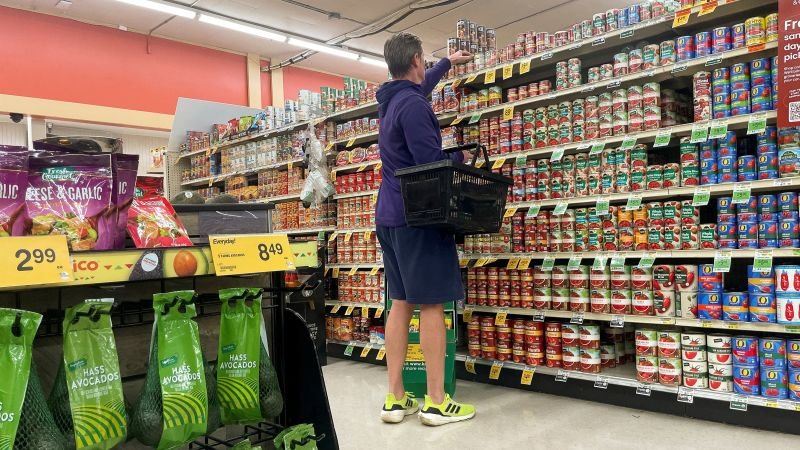Physical Address
304 North Cardinal St.
Dorchester Center, MA 02124
Physical Address
304 North Cardinal St.
Dorchester Center, MA 02124

New York
CNN
—
President-elect Donald Trump says Americans’ inability to afford food will be a relic of the past. “They’re going to be buying groceries very soon,” he said before the opening bell on the New York Stock Exchange on Thursday, where he was. Awarded as Time’s “Person of the Year”.
Americans paid 22% more for groceries last month than when Trump left office in January 2021, according to November Consumer Price Index data released earlier this week. And, compared to February 2020, before the pandemic, Americans paid 27% more for groceries in November.
Trump referred to an “old lady” who went to a grocery store to buy three apples. “He put them on the champion, and he looked and saw the price, and said, ‘Would you excuse me?’ And he put an apple back in the fridge,” he said.
On the campaign trail, Trump focused primarily on drilling for more oil to help Americans pay for more food. But, before returning to the White House, the strategy to lower food prices has changed somewhat to focus on supply chain issues in addition to drilling for more oil.
Trump, who spoke in front of a table of packaged foods, used one August press conference in his presidential campaign to draw attention to food inflation. “Food prices have gone up,” he said.
“When I win, I’m going to drop prices immediately, starting on day one,” Trump continued. “We’re going to drill, baby, we’re going to drill,” he said, referring to increased domestic oil production. “That will bring down the prices of everything.”
(Economists generally prefer to see prices rise modestly over an economy in decline, a scenario known as deflation, because it can cause people to delay purchases. And often, when goods prices fall sharply, it’s because more people are out of work and the economy is in recession.)
“It’s hard when things go down,” Trump said in a Time Magazine “Person of the Year” interview published Thursday, referring to food prices. “You know, it’s very hard… But I think they will do it. I think that energy will go down.”
“I think a better supply chain will bring it down,” he continued. “You know, the supply chain is still broken.”
This was one of the main factors that caused food prices to rise during the pandemic: shipping availability decreased and freight times increased, leading to shortages of imported food. But these problems have been more or less resolved since then.
recently, cargo volume of monthly imports It was near record highs, according to the National Retail Federation and Hackett Associates, which compiled their monthly Global Port Tracker reports.
Trump’s August press conference focused on food prices, raising “supply chain issues” as a contributor to high housing costs, but not as specifically contributing to high food costs.
A slightly new outlook on food prices US crude oil production rose weekly since December 6. 13.6 million record barrels per day, according to 1983 federal data. Trump himself acknowledged it on Thursday, saying that “there is no country in the world that produces more oil than the United States.” That has helped gas prices go downwhich, in turn, has helped lower the cost of transporting food to grocery stores across the nation.
Experts told CNN that further drilling, if feasible, it wouldn’t move the dial much in terms of lower food prices due to a number of other factors. Focusing on improving supply chains can be a more effective strategy, although it will not be easy.
For example, the traffic of two critical international transport lanes has been drastically cut: the Suez Canal, as a result. Months of attacks by Houthi militants on ships; and the Panama Canal, due to a historic drought.
However, even if Trump helps improve supply chain problems, other policies he will implement, including broad-based tariffs and mass deportations of migrants who have entered the country illegally, risk raising food prices significantly.
In contrast to deportation, the food and agricultural industries it is based on migrant work. Without it, these industries are likely to face labor shortages, which may force wages to rise as a result. The higher cost of labor would then be passed on to consumers at higher prices. Food shortages could also result if there are not enough workers to support food production, possibly putting upward pressure on prices.